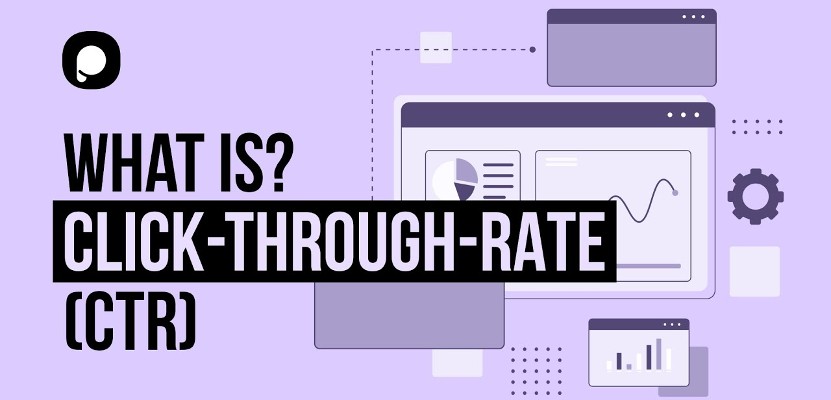Enhance Your Google My Business Listing with GMB CTR Manipulation
Enhance Your Google My Business Listing with GMB CTR Manipulation
Blog Article
Optimizing Organic Click-Through Rates With CTR Control
The optimization of organic click-through rates (CTR) is a nuanced endeavor that hinges on understanding both user psychology and reliable web content discussion. The landscape is swarming with mistaken beliefs and oversimplifications regarding what really drives CTR.
Comprehending Click-Through Rates
Understanding click-through prices (CTR) is necessary for examining the efficiency of internet marketing strategies. CTR gauges the portion of individuals who click a certain link or advertisement contrasted to the overall number of customers that view it. A greater CTR suggests that the material is involving and appropriate to the target audience, while a reduced CTR might signal a demand for optimization.
To determine CTR, divide the variety of clicks by the number of impacts and increase by 100. As an example, if an ad obtains 300 clicks out of 10,000 perceptions, the CTR would be 3%. This statistics is essential for assessing different elements of electronic marketing, including seo (SEO), e-mail campaigns, and social media sites advertising.
In addition, examining CTR helps marketing experts determine which approaches produce the ideal results and which call for refinement. By concentrating on boosting CTR, businesses can improve their web content's visibility and effectiveness, leading to boosted website traffic and potential conversions. Comprehending the subtleties of CTR is foundational for any marketing expert aiming to enhance their on the internet visibility and take full advantage of roi (ROI)

The Psychology of Individual Habits
Individual behavior is substantially influenced by emotional elements that determine how people interact with on-line content. Recognizing these factors is necessary for optimizing click-through prices (CTR) in organic search outcomes.
Psychological actions also substantially influence individual actions. Material that reverberates emotionally can cause a feeling of seriousness or curiosity, prompting customers to click. In addition, social evidence-- such as individual testimonials or ratings-- can improve trust fund and encourage interaction, as people frequently seek to the actions of others to educate their own choices.
Moreover, the principle of shortage can drive clicks - CTR Manipulation Service. Limited-time offers or special web content develop a fear of missing out (FOMO), compelling individuals to act swiftly. Recognizing these emotional drivers enables marketing professionals to develop even more engaging web content that reverberates with their target market
Reliable CTR Adjustment Strategies
Leveraging emotional understandings can dramatically boost click-through prices (CTR) via targeted adjustment strategies. Among one of the most efficient techniques is using compelling headlines that evoke interest or urgency. Phrasing titles as questions or including numbers can bring in even more interest, triggering users to click.
Another technique entails maximizing meta summaries to produce a sense of relevance and immediacy. By plainly detailing the advantages or services supplied in the material, you can engage possible viewers and convince them to great post to read click. Additionally, making use of power words-- such as "unique," "shown," or "totally free"-- can boost the allure of your material.
Visual components likewise play an important role. Including captivating images or thumbnails can attract individuals in and improve CTR. A/B screening different visuals can aid identify which photos resonate ideal with your audience.
Lastly, making sure that your content assures deliverable value leads to greater CTR. When users regard that clicking will provide them with significant understandings or services, they are more most likely to engage. By employing these methods thoughtfully, marketing experts can properly control CTR to their advantage while preserving informative post moral standards.
Typical Misconceptions About CTR
A number of mistaken beliefs border click-through prices (CTR) that can lead marketers to make misguided decisions. While a high CTR suggests that more individuals are clicking, it does not assure sales or conversions.
An additional usual idea is that CTR is a separated metric. In truth, CTR must be examined along with other performance indications, such as bounce price and conversion rate, to acquire a holistic sight of project success.
Furthermore, some marketing professionals presume that optimizing for CTR alone is enough. Concentrating solely on CTR can lead to clickbait tactics that might draw in clicks yet stop working to engage customers meaningfully. LinkDaddy CTR Manipulation. This technique can hurt brand name track record and result in reduced retention rates
Last but not least, there is a concept that CTR strategies are generally effective. The fact is that ideal CTR methods can vary significantly throughout industries and target market, necessitating tailored approaches for different market sectors. Comprehending these misconceptions is important for developing efficient CTR approaches that line up with overarching marketing goals.
Gauging CTR Success
Although high click-through rates (CTR) can suggest effective engagement with material, measuring their true success needs a comprehensive analysis of numerous factors. It is essential to comprehend the context in which the CTR is attained. A high CTR on a misleading title may not equate to purposeful involvement or conversions, ultimately reflecting improperly on the brand name's reputation.
2nd, evaluating the source of web traffic is vital. Organic website traffic from internet search engine can signify a robust content method, while clicks from unnecessary resources might show an absence of targeting. In addition, gauging the succeeding individual habits is crucial; examining metrics such as bounce price, time invested in page, and conversion rates can offer deeper insights into the quality of the involvement launched by the CTR.

Conclusion

The optimization of natural click-through rates (CTR) is a nuanced undertaking that hinges on recognizing both individual psychology and effective web content presentation. CTR gauges the additional reading percentage of users that click on a particular web link or ad compared to the complete number of users that view it. A greater CTR indicates that the material is engaging and appropriate to the target audience, while a lower CTR may signal a need for optimization.
Concentrating solely on CTR can lead to clickbait techniques that may attract clicks however fail to involve users meaningfully. Additionally, gauging the subsequent individual actions is important; examining metrics such as bounce rate, time spent on web page, and conversion prices can supply much deeper understandings into the high quality of the involvement initiated by the CTR.
Report this page